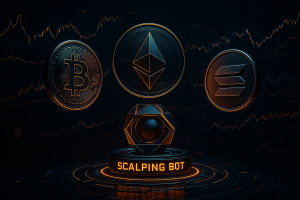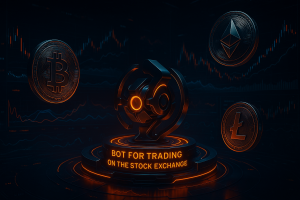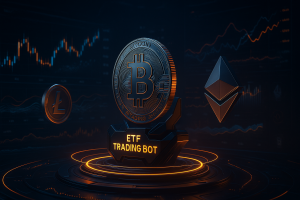Profitable trading bot

Trading in financial markets has become increasingly accessible, and many traders are now looking to automate their processes for greater efficiency. One of the most popular solutions is the use of trading bots – software that executes trades on exchanges or activates pre-set algorithms. However, developing and setting up a profitable bot is far from straightforward.
This software automatically carries out trades across various markets, including stocks, cryptocurrencies, or Forex. It analyses market data, utilises algorithms to spot trading opportunities, and opens or closes positions automatically.
There are numerous platforms available for automated trading, such as MetaTrader, TradingView, or QuantConnect. Your choice of platform depends on your experience and trading objectives. Some platforms offer ready-made bots with customisable parameters, while others require programming skills and a deeper understanding of technical analysis.
Markets are continually evolving, and a strategy that once delivered good results may soon become outdated. Regular monitoring of your bot’s performance and ongoing tweaks to your strategy are essential for maintaining profitability.
Given how quickly technology and market conditions are advancing, it’s vital to keep your bot updated and to leverage the latest innovations in trading algorithms and data analysis.
Trading with a bot can be a worthwhile alternative to boost profits and streamline operations, but consistent success depends on factoring in numerous variables that demand constant attention and adjustment. Software solutions that help traders automate their activities don’t guarantee profits on their own; nevertheless, with proper setup and skillful management, they can be highly effective in the hands of an experienced user.
After several months of running your bot, it’s important to review its performance. Focus on key metrics such as returns, volatility, drawdowns, and risk/reward ratio. This analysis will help you identify weaknesses and highlight areas for improvement.
Financial markets are inherently dynamic, and strategies that proved successful in one market phase may falter in another. For example, trend-following approaches might perform well during bullish markets, yet be unprofitable during periods of consolidation or sharp declines. Staying alert and ensuring your bot can adapt to these market shifts is crucial.
A critical element of running a successful trading bot is effective capital management. Avoid putting all your funds into a single trade; instead, adopt a diversified approach. Implement strict risk controls, including stop-loss orders and maximum exposure limits for each trade, to protect your capital from excessive losses.
A well-functioning bot also relies on constant access to up-to-date market data and thorough analysis. Outdated information or technical glitches can significantly impair trading outcomes. Regular updates and system optimisation are key to avoiding such issues.
Ultimately, a profitable trading bot results from a carefully balanced blend of technology, robust strategies, and sound risk management. While the bot itself won’t guarantee success, proper configuration and ongoing oversight can considerably improve trading efficiency and profitability.
Category news: Trading Strategies
-

Trading bot with its own strategy
With every passing day, more traders are turning to automated systems – trading bots. But the real value lies not simply in using a bot, but in having one that runs on a proprietary, purpose-built strategy. A custom-designed system can become a genuine competitive edge in the trading world. Building a trading bot with a […]
-

Day trading bot
One of the clearest examples of technological progress in the trading world is the use of bots for day trading. These are specialised programmes capable of executing trades on an exchange entirely on their own over the course of a single trading day, guided by predefined algorithms and parameters. Such bots are becoming increasingly popular […]
-

Scalping bot
Financial markets are evolving at a rapid pace, and traders are constantly searching for faster and more accurate ways to profit from market fluctuations. One such method is scalping – a strategy in which a trader executes numerous trades in a short period, aiming to capture profit from very small price movements. But due to […]
-

Bot for trading on the stock exchange
Trading on the exchange has always been associated with intense analytical work, quick decision-making, and cold, calculated logic. Today, however, these qualities are increasingly being delegated not to humans, but to machines. One of the most striking examples of the digital transformation of modern finance is the trading bot – a specialised program designed to […]
Latest news
-

Bot for trading goods
In an era of rapidly advancing digital technology, businesses are increasingly turning to automated solutions that simplify and accelerate workflows. One such solution is trading bots – programs capable of replacing or complementing human labor in the sales process. Their integration into product trading offers a number of substantial advantages that significantly enhance business efficiency. […]
-

SHIB
SHIB, or Shiba Inu, is a cryptocurrency that emerged in 2020, inspired by the popular meme coin Dogecoin. It quickly caught the attention of the crypto community thanks to its extremely low price per token and a marketing strategy centered around social media and fan engagement. Although SHIB was initially conceived as a “joke,” its […]
-

Real-Time Trading Bot
Real-time trading bots connect directly to trading platforms via API. They receive up-to-the-second data on prices, volumes, supply and demand, and use predefined algorithms to execute trades. These algorithms can be simple – for example, buying when the price drops and selling when it rises – or highly sophisticated, incorporating technical analysis, artificial intelligence, or […]
-

ETF Trading Bot
Thanks to rapid technological development, investing is gradually shifting from a domain reserved for professionals to an area of widespread public interest. Exchange-traded funds (ETFs), in particular, have grown extremely popular, offering diversification, transparency, and ease of purchase. Against this backdrop, a new tool is emerging – an ETF trading bot. ETF funds, or exchange-traded […]

